Imagine waking up to the sound of waves, coffee in one hand, laptop in the other—that’s the digital nomad dream. But with great freedom comes financial uncertainty. Juggling freelance income, shifting living costs, and surprise travel fees can leave even seasoned nomads scrambling. That’s where a digital nomad budget template swoops in to save the day.
In this post, you’ll learn how to build a practical budget template, track every expense, and plan for those curveballs life throws at you abroad. We’ll walk you through research tips, step-by-step template creation, cost-saving hacks, and must-have tools. By the end, you’ll feel empowered to take charge of your finances—no more guessing, no more stress.
For more overarching strategies to simplify your nomadic journey, check out our guide to Digital Nomad Tips to Simplify Life on the Road Today.
Why a Dedicated Digital Nomad Budget is Non-Negotiable
The Unique Financial Landscape of a Digital Nomad
Living and working from anywhere sounds amazing—but it also means:
- Fluctuating income streams vs. traditional salaries: One month you might land a big client; the next, you’re hustling for gigs.
- Variable cost of living: A coffee in Chiang Mai costs far less than one in Copenhagen. Your budget needs to adapt.
- Unpredictable expenses: Think visa renewals, passport renewals, one-off plane tickets, and holiday surcharges.
- Currency swings: A sudden change in exchange rates can eat into your savings if you’re not prepared.
- Mixing business and personal costs: Without clear boundaries, you’ll end up writing off personal dinners as “office meals.”
Benefits of Proactive Budgeting & Tracking
Investing time into a solid budget pays off big:
- Financial peace of mind: No more lying awake wondering if you can afford rent next month.
- Smarter destination choices: With real numbers in hand, you can confidently pick countries that match your budget goals.
- Long-term sustainability: Build a buffer for emergencies so you stay on the road longer without panic.
- Avoid debt & grow savings: Identify wasteful spending, funnel that money into an emergency fund, and watch your nest egg grow.
- Data-driven decisions: When you track expenses, the guesswork vanishes—so you can focus on living your best nomadic life.
Pre-Departure Financial Planning & Research
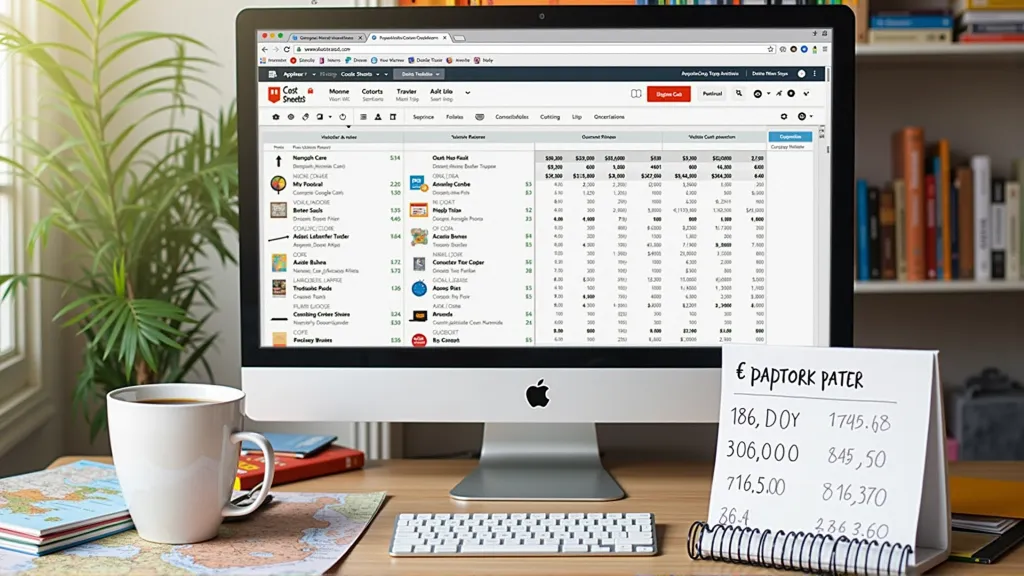
Researching Cost of Living (The Foundation)
Before you jet off, dive into location research—don’t just Google “cost of living in Bali,” get real-time data from:
- Numbeo & Expatistan: Compare rent, groceries, and transportation side by side.
- Nomad Forums & Facebook Groups: Ask fellow digital nomads about hidden costs (think unexpected scooter repairs or visa runs).
- Budget Tools & Apps: Use comparison spreadsheets or cost-of-living calculators to plug in your own lifestyle needs.
When you research, focus on:
- Accommodation: Short-term (hostels, Airbnbs) vs. long-term leases (co-living spaces or local apartments).
- Food: Estimate groceries at local markets versus eating out—Pro tip: street food often saves you a chunk of change.
- Transportation: Check local transit passes, ride-share prices, and whether renting a motorbike makes sense.
- Internet & Co-Working: Factor in daily or monthly coworking fees (some coworking spaces offer nomad-friendly discounts).
- Utilities: If you plan to stay several months, research typical electricity, water, and Wi-Fi costs.
Understanding Your Income & Setting Realistic Goals
Freelance pay can swing wildly. Here’s how to stay grounded:
- Calculate a conservative average of your last 6 months’ income (use net earnings, not gross).
- Set financial goals: Do you want to sock away $500/month into savings? Or pay off a client invoice faster?
- Break goals into monthly milestones. For example: “I’ll earn at least $2,000 after taxes so I can allocate $500 to savings and $1,000 for rent.”
- Use your digital nomad budget template to map these targets—seeing numbers laid out makes decisions easier.
Initial One-Off Costs to Factor In
Don’t get blindsided by start-up expenses:
- Relocation Expenses: Flights, accommodation deposits, and shipping your laptop or gear overseas.
- Visas & Passport Renewals: Research visa fees (tourist vs. work visas) and add $50–$200 for expediting your passport if needed.
- Travel Gear & Tech Setup: A reliable power bank, universal adapter, noise-canceling headphones, and a sturdy backpack can cost $200–$500 upfront.
- Travel & Health Insurance: Choose a plan that covers remote work equipment and emergency evacuation—often $50–$100 per month, depending on coverage.
Crafting Your Digital Nomad Budget Template
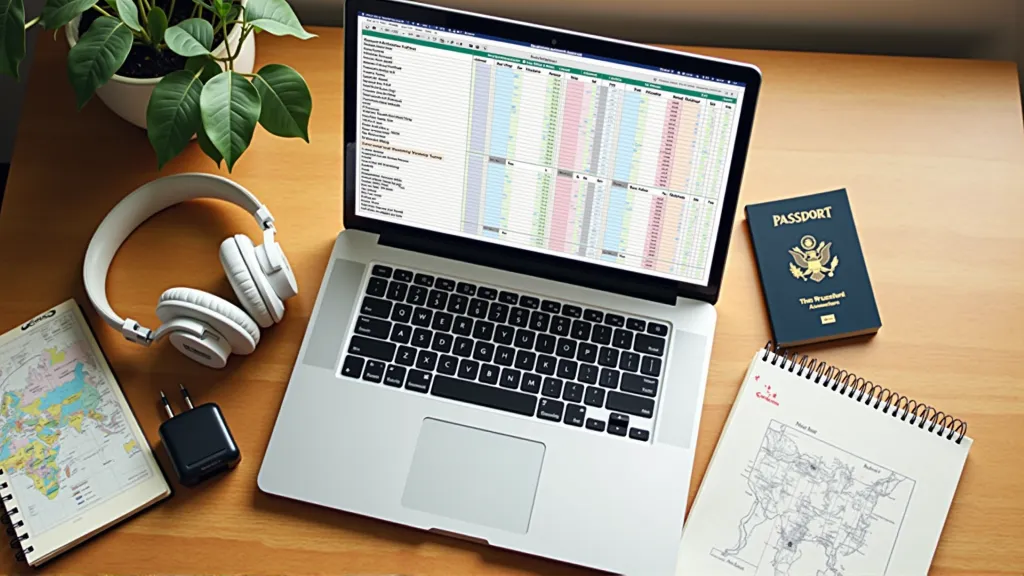
Choosing Your Budgeting Method
Picking a budgeting style that fits your lifestyle is key. Here are three popular methods:
- Zero-Based Budgeting: Assign every dollar a job until you reach zero. You’ll know exactly where your money goes each month.
- 50/30/20 Rule: Split your take-home pay into three buckets—50% for needs, 30% for wants, and 20% for savings or debt. This method keeps things simple and flexible.
- Envelope System (Digital or Physical): Allocate cash or digital “envelopes” for different expense categories. When an envelope is empty, you stop spending in that category. This tactile approach can help you see when you’re about to overspend.
Each method has perks. If you crave detail, go zero-based, for quick framework, try 50/30/20. If you need a visual spending limit, use envelopes.
Essential Categories for Your Template (Monthly & Non-Monthly)
Structure your digital nomad budget template around these categories:
Monthly Fixed Essentials
- Accommodation (rent or co-living fees)
- Groceries & basic dining
- Utilities (internet, electricity, water, local SIM/phone)
- Health insurance premiums
- Software/subscriptions (project management, VPN, etc.)
- Debt repayments (loans, credit cards)
Monthly Variable Essentials/Wants
- Local transportation (buses, scooters, ride-shares)
- Co-working space fees (if you prefer an office vibe)
- Dining out & entertainment (coffee shops, local events)
- Laundry & personal care/toiletries
Non-Monthly Recurring Essentials (Sinking Funds)
- Visa renewals
- Travel insurance (annual plans)
- Flights (save for future trips)
- Tech upgrades/repairs (laptop, power bank)
- Clothing & gear replacement (backpack, shoes)
- Professional development/courses (skills upgrade)
Savings & Emergency Fund
- Allocate at least 10–20% of income to an emergency stash (aim for 3–6 months of living costs).
- Long-term savings or investments (retirement, index funds).
Template Formats: Finding What Works for You
Your budget is only helpful if you actually use it. Here are a few formats:
- Spreadsheets (Excel, Google Sheets): Highly customizable. Use formulas to auto-sum categories and track actual vs. budgeted amounts.
- Budgeting Apps with Template Features: Some platforms, like Deel’s monthly budget planner, let you import expenses and set goals. The Tutor Resource’s calculator is another structured example to get you started.
- Physical Notebooks: If you love analog tools, a simple ruled notebook or bullet journal can work. Draw columns for categories, jot down daily expenses, and tally at the end of each week.
Diligently Tracking Your Monthly Expenses Abroad
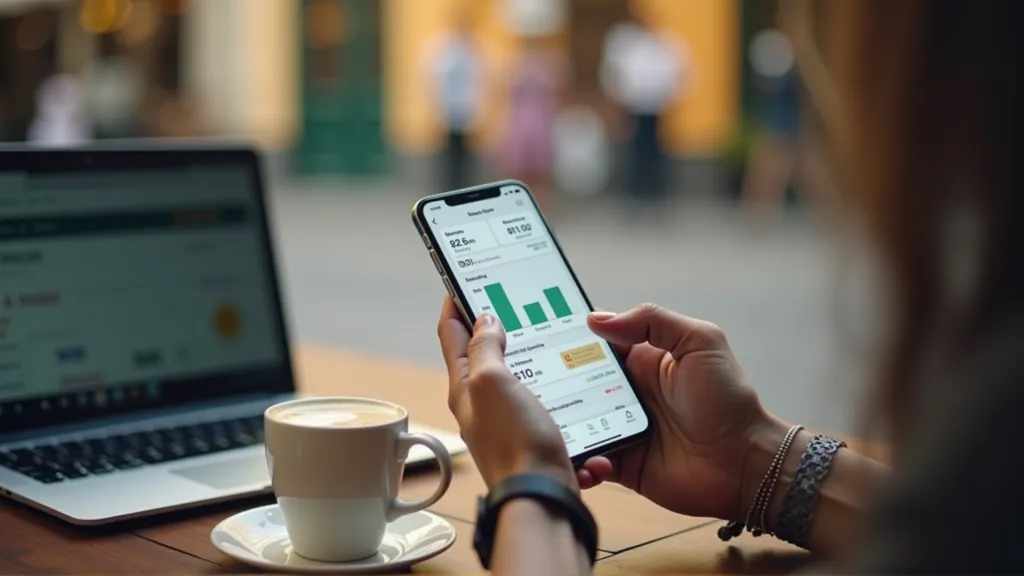
Why Consistent Tracking is Key
Tracking your expenses every day keeps you in control. When you compare actual spending to your digital nomad budget template, you spot overspending fast. Here’s why it matters:
- Reality Check: You’ll see where money really goes—maybe that daily latte adds up faster than you think.
- Smart Adjustments: If you’re overspending on dinners, you can cut back before the month ends.
- Peace of Mind: Tracking builds confidence. You’ll sleep better knowing you’re not flying blind.
Methods for Tracking Expenses
Choose a method that fits your style and stick with it:
- Manual Tracking: Use a simple spreadsheet or carry a notebook. It takes discipline, but writing expenses down can feel satisfying.
- Budgeting Apps: Try apps like YNAB, Mint, or PocketGuard. Look for multi-currency support so you can log payments in different countries. Some co-working platforms, like Grey, have built-in expense insights you’ll love.
- Key Features to Look For:
- Multi-currency support to avoid manual conversions.
- Bank syncing (but use it cautiously abroad—watch out for foreign transaction fees).
- Automatic categorization so you don’t spend hours sorting expenses.
Regular Review Cadence
- Daily Check-Ins: Spend 2–3 minutes each evening logging receipts or app entries.
- Weekly Summaries: Review your top three expense categories. “Why did I spend $50 on rideshares this week?”
- Monthly Deep Dives: At month’s end, compare totals vs. budget. Tweak categories in your digital nomad budget template to stay on track next month.
Tips for Accurate Tracking
- Record expenses immediately—don’t rely on your memory.
- Keep receipts or snap photos of them on your phone.
- Track every purchase—small items add up fast.
- Reconcile with bank or credit card statements to catch any missed entries.
Smart Strategies to Minimize Costs & Maximize Savings

Accommodation Hacks
- Longer Stays = Better Rates: Booking a month-long Airbnb often saves you 10–20% compared to nightly rates.
- House-Sitting or Pet-Sitting: Websites like TrustedHousesitters let you swap free lodging for pet care—instant savings.
- Off-Season Travel: Visit Bali in May instead of December. You’ll find lower rents and fewer tourists.
Eating Smart & Local
- Cook More, Eat Out Less: Use local markets. A week’s worth of groceries in Chiang Mai might cost less than a single dinner in Bangkok’s tourist district.
- Shop at Local Markets: Buying produce from farmers means fresh ingredients and lower prices.
- Lunch Specials & Street Food: In many countries, lunch menus cost half of dinner. Try street food stalls for genuine flavors at wallet-friendly rates.
- Pro Tip: Learn to whip up a couple of local dishes—rice and dal in India or simple stir-fries in Southeast Asia.
Transportation Savings
- Public Transport: Buses and metros often cost under $1 per ride in many cities.
- Walk or Cycle: For trips under 3 miles, walking saves money and keeps you fit. Some cities have cheap bike-share programs—win-win.
- Travel Passes & Discount Cards: Look out for weekly or monthly passes. In Lisbon, a monthly metro pass is far cheaper than single rides if you commute daily.
Connectivity on a Budget
- Local SIM Cards: Grab one at the airport or local shop to avoid high roaming fees.
- Free Wi-Fi: Many cafes, libraries, and co-working spaces offer complimentary Wi-Fi. Always use a VPN to protect your data.
- eSIMs for Convenience: Services like Airalo let you purchase data plans in minutes—no SIM swap needed.
Leveraging Travel Rewards & Deals
- Credit Card Points & Airline Miles: Use a travel card that gives points for every dollar spent. Redeem them for free flights or hotel stays.
- Hotel Loyalty Programs: Even if you stay in hostels, sign up for booking platforms’ loyalty programs to score discounts or free nights.
- Deal Newsletters: Subscribe to alerts like Scott’s Cheap Flights or Secret Flying. Early-morning emails can land you a $200 one-way ticket to Europe.
Essential Tools & Resources for Digital Nomad Budgeting
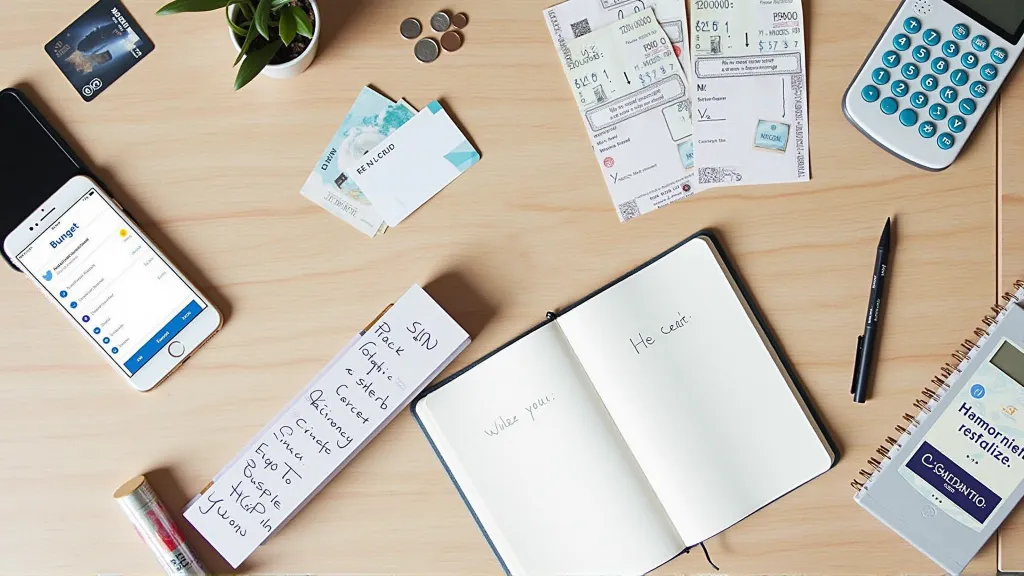
Budgeting & Expense Tracking Software/Apps
- YNAB, Mint, PocketGuard: Great for multi-currency support and clear visuals.
- Grey.co’s Expense Insights: Helps you spot spending patterns in one dashboard.
- These tools sync with your bank (carefully when abroad) and auto-categorize expenses, so you spend less time logging and more time exploring.
Banking Solutions for Nomads
- Multi-Currency Accounts: Services like Wise and Revolut let you hold and convert money at low rates.
- Low/No-Fee Cards: Look for cards that waive foreign transaction fees—every little saved fee adds up.
- Backup Banking Options: Keep a secondary account or prepaid travel card in case one service glitches or blocks a transaction.
Online Calculators & Converters
- Numbeo’s Cost of Living Calculator: Check typical expenses in any city to set realistic budgets.
- Currency Converters: Use apps like XE or the built-in Google converter for real-time rates.
- The Tutor Resource’s Budget Calculator: A simple tool to map income and expenses—perfect for testing scenarios before you commit.
Community Wisdom
- Forums & Facebook Groups: “Digital Nomad Reddit,” “Nomad List,” or location-specific Facebook groups share fresh tips on where to find cheap coworking, affordable eats, and hidden bargains. Tapping into these communities can save you hundreds each month.
Advanced Financial Considerations for Sustained Nomadism
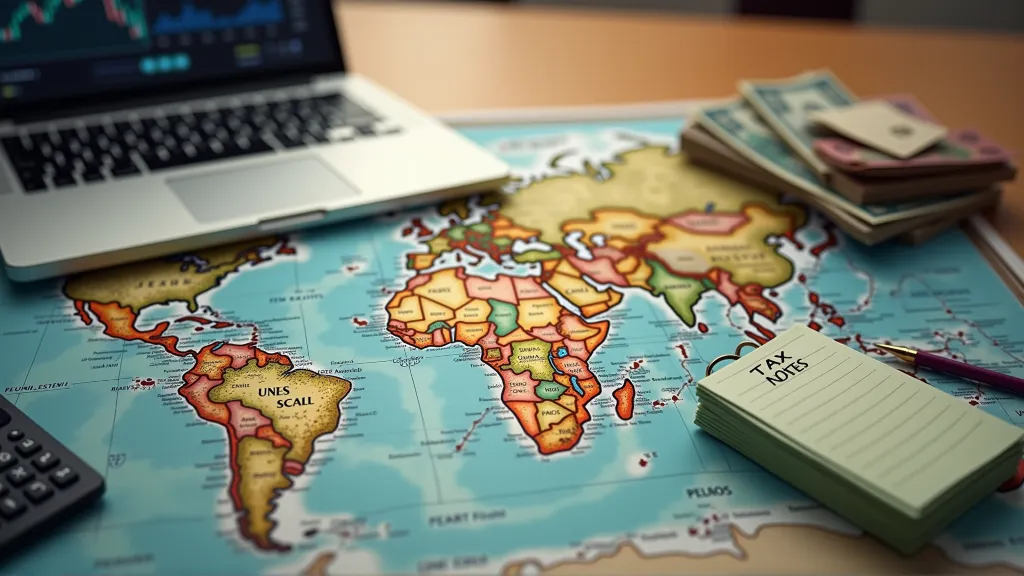
Managing Taxes as a Digital Nomad
- Tax Residency & Obligations: Learn whether your home country taxes you on worldwide income or only local earnings.
- Double Taxation Agreements: Many countries have treaties to prevent you from paying tax twice. Do your homework before you move.
- Professional Tax Advice: A good international tax accountant can save you headaches and fines—worth every penny.
Building and Maintaining an Emergency Fund
- Critical for Nomads: Without a steady home base, unexpected costs (medical, travel delays, device repairs) can add up.
- How Much to Save: Aim for 3–6 months of living costs. Store it in a high-interest, easily accessible account.
- Separate from Daily Spending: Keep this fund in a different bank or savings account so you resist dipping in for non-essentials.
Saving and Investing for the Future
- Retirement Planning: As a self-employed nomad, consider IRAs or international-friendly brokerage accounts. Automate monthly contributions so you never forget.
- International Options: Explore global index funds or robo-advisors that accept expat investors. Diversify across currencies to reduce risk.
Dealing with Currency Fluctuations
- Hold Funds in Stable Currencies: If you’re in a volatile economy, keep savings in USD, EUR, or another stable currency.
- Exchange Strategies: Set alerts for favorable rates, use limit orders, or convert in smaller batches to avoid bad timing.
Conclusion for digital nomad budget template
Effective digital nomad budget templates do more than track numbers—they shape a sustainable lifestyle that lets you travel freely without financial stress. Remember to research before you leave, build a flexible template, track diligently, and spend smart.
With the right tools and mindset, you’ll master your finances and unlock more adventures on the road. You’ve got this!
What are your go-to budgeting tips or tools? Share them in the comments below!
For more insights, revisit our main guide on Digital Nomad Tips to Simplify Life on the Road Today.



